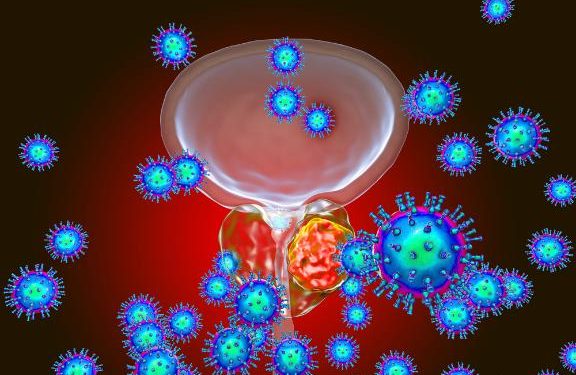Although there’s no cure for stage 4 prostate cancer, treatments can help relieve pain and other symptoms.
Radiation therapy uses a beam of high-energy rays to shrink tumors and ease pressure on nearby tissues and bones. This treatment can also be used to treat bone metastasis from prostate cancer that has spread.
Treatments
Cancer treatments at this stage focus on slowing the cancer’s growth and improving symptoms. Hormone therapy, which reduces your body’s production of testosterone (the hormone that prostate cancer cells rely on to grow), is usually part of treatment.
Your doctor will do a few tests to find out how advanced your cancer is. These include a PSA test, digital rectal exam, and Gleason score. They will also use imaging exams, such as a CT scan or magnetic resonance imaging (MRI) scan. These exams give a clear picture of the prostate and surrounding tissue. They can also help show whether the cancer has spread within your pelvic bones.
If the cancer isn’t spreading, your doctor may recommend active surveillance. They might suggest you have PSA blood tests and a rectal exam every 3-6 months. They might also do a biopsy. You might also have a bone scan or a positron emission tomography (PET) scan to see how the cancer is growing.
Surgery might be done to treat stage 4 prostate cancer, but it’s less common than in earlier stages. Surgical options include removing the entire prostate, called radical prostatectomy. This is often combined with removal of the lymph nodes in your pelvic area. You might also have a less invasive procedure called a transurethral resection of the prostate, or TURP.
In stage 4, your cancer is more likely to come back after surgery or radiation. If it does, you might have another treatment, such as brachytherapy or high-intensity focused ultrasound. These treatments send an electrical current through a metal probe that heats and destroys the cancer cells.
You might also try newer medicines, such as immunotherapy drugs. These can block proteins that cancer cells use to hide from your immune system. They can also boost your own immune system to fight the cancer.
You might want to consider taking part in a clinical trial for new cancer treatments. These trials allow you to try out new treatments before they are widely available. Your doctor might be able to tell you about a clinical trial that is right for you.
Prognosis
People with cancer are often concerned about how long they might live. Statistics based on information collected by the Office for National Statistics and other researchers can help people understand their chances of survival over five years after diagnosis. These figures are based on people with similar diagnoses and are a useful tool to help plan treatment and give an indication of what to expect. However, it is important to remember that each person is different, and your experience may differ from the statistics.
Your prognosis depends on many factors, including the stage of the disease and the grade of the tumor. The stage is determined by the results of tests that look at the size of the tumor and how much PSA (prostate specific antigen) is present in the bloodstream. The cancer’s grade is determined by examining the cells under a microscope and comparing them to healthy tissue. Tumors with a higher Gleason score are more aggressive and grow faster.
Staging is used to determine how advanced the cancer is and if it has spread to other parts of the body. A healthcare professional might recommend treatment to manage symptoms or prevent the cancer from spreading further.
At this stage, the cancer is located in the prostate gland and has not spread to nearby tissues or lymph nodes. The doctor might recommend a surgical procedure called radical prostatectomy, in which the whole prostate is removed along with some of the surrounding tissue. This is usually done only if the cancer has a Gleason score of six or lower and has not spread to the nearby lymph nodes.
Cancer that has spread to the pelvic lymph nodes might be diagnosed as localized stage IV or metastatic stage IV. This is the most common stage of advanced prostate cancer, and it might also include spread to bones or other areas in the body.
The patient’s chances of survival depend on how far the cancer has spread and if it has affected other organs. The most common treatment for stage 4 cancer is hormone therapy, which reduces the production of testosterone. This helps to slow the growth of the cancer and relieve symptoms, such as urination problems. Radiation can be used in some cases, but surgery isn’t usually recommended.
Symptoms
The prostate is a walnut-sized gland that sits just below the bladder and surrounds the hollow duct that empties urine from the bladder. The prostate also helps create semen. Prostate cancer is the most common form of cancer in people assigned male at birth, and it’s the second leading cause of cancer deaths among men. It grows slowly and usually causes few symptoms in the early stages. But when the cancer spreads, it can cause pain and other problems. To determine if your cancer has spread, doctors use cancer staging, which involves blood tests, biopsies and imaging tests.
In stage 4 of prostate cancer, the tumor is larger than in earlier stages and it has likely spread beyond the prostate to nearby tissue or lymph nodes. It may also have spread to the seminal vesicles, or to other parts of the body, including bones. The stage of the disease determines which treatment options are available.
Initial staging is based on the results of PSA (prostate specific antigen) blood tests and from a biopsy. The PSA level indicates how fast the prostate cancer is growing. Doctors will also look at how many PSA levels have been recorded and the Gleason score.
A biopsy is an invasive procedure during which a health care professional removes a sample of the prostate tissue for testing. A pathologist will examine the sample to see if cancer cells are present and, if so, what stage the cancer is in.
MRI scans can give a clear picture of the prostate and other tissues. To get an even better view, a contrast dye might be injected into the body before the test.
Surgery is not usually used in this stage of the disease unless the cancer is causing symptoms that might be relieved by it, such as trouble passing urine or blood in the urine. In addition, radiation therapy may be an option to relieve any pain or other symptoms.
Treatment options
Your treatment team will discuss your options and work with you to decide on the best course of action. Depending on the stage of your cancer, you might need to combine different treatments.
Your team might recommend radiation therapy and hormone therapy. These might be combined with a prostate biopsy to find out the stage of your cancer and whether it has spread to other areas. They might also suggest a procedure called cryosurgery, which uses freezing to kill cancer cells in the prostate.
You might be able to try immunotherapy to treat your disease. This is a newer type of treatment that helps your body’s natural immune system fight the cancer. The medicine is given through a vein (IV). It travels throughout your body and kills fast-growing cancer cells, along with some healthy cells. You might also need chemotherapy drugs to help keep cancer from spreading, or bisphosphonates to relieve bone pain.
Other treatments include a drug that stops your body making testosterone. It might be used with other types of hormonal therapy or as a stand-alone treatment. This medicine is called a GnRH agonist or antagonist.
If your cancer has spread to other parts of your body, you might need surgery or radiation therapy or a combination of these treatments. You might also try a drug that targets and destroys cancer cells in the prostate called a chemotherapeutic agent.
You might be able to take part in a clinical trial of a new drug. These trials test whether new treatments are safe and effective. You might be able to get free medicines that aren’t yet available to the general public.
If your cancer hasn’t spread very far, you might want to try watchful waiting. This means you’ll have regular PSA tests and MRI scans to check for any signs that your cancer is growing or changing. You might also need to have blood or urine tests to look for other health problems. Your doctor might also recommend that you take calcium supplements to help prevent bone pain if the cancer has spread to your bones.









